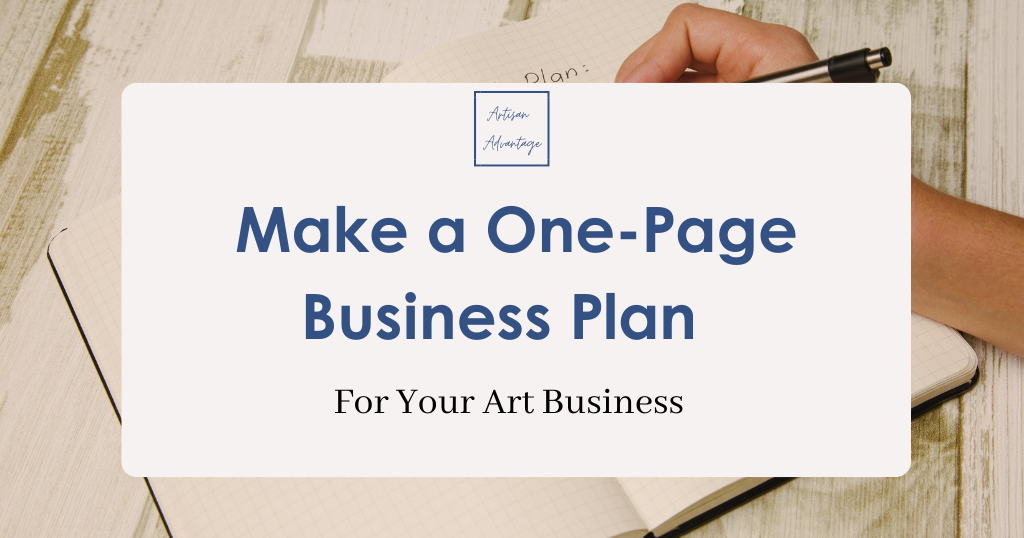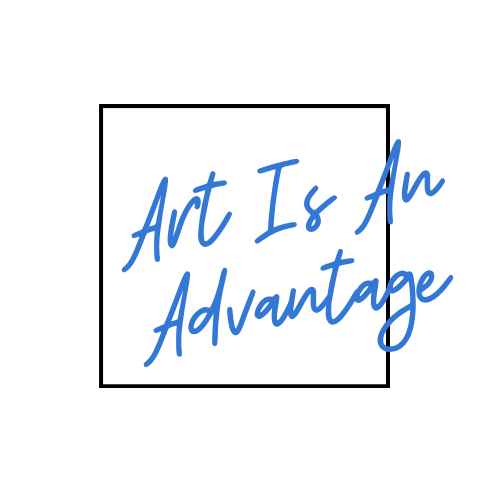Write A One-Page Business Plan for Your Art Business
Recently I was asked if I had a business planning template that I could offer to an artist. While I’ve attempted to create them over the years, the truth is that when I work with an artist on planning, I typically start from scratch for each artist. I don’t have a one-size-fits-all plan for my clients.
So, where does an artist start when making a business plan?
While you might be inclined to write a detailed plan, sometimes a concise and focused approach can be just as practical. You can start by mapping things out on one page, which is how I started working after reading Chris Guillebeau’s $100 Start Up several years ago. While it’s not specific to an art business, the book offers an excellent overview of how to map out a business on one page. And it puts you in a great frame of mind to start your planning.
Don’t Overcomplicate Things
While exploring how to create a one-page business plan specifically tailored to the needs of your art business, avoid bogging yourself down in too many details. Keep things simple while focusing on key points to keep yourself on track.
Outside of the template offered in The $100 Start Up, here are some other areas you can map out on one piece of paper.
 This post contains affiliate links which means I receive a small commission if you make a purchase using the link. For more information, see my full terms here.
This post contains affiliate links which means I receive a small commission if you make a purchase using the link. For more information, see my full terms here.
Here are some things to consider with your one-page plan.
Define Your Vision and Mission
Begin your one-page business plan by clearly defining your vision. Your vision is simply a picture of what you want your business to look like in the future. Make it concise, capturing what you want to accomplish and how you want to impact your audience or the art community. Remember, your vision can change over time. You are not locked into it, but having a starting point helps move you in the right direction.
Identify Your Target Audience
Understanding your target audience is crucial for any business, including art enterprises. Who are the likely people who will purchase your work? This will help you tailor your artistic style, marketing efforts, and communication strategies to resonate with your intended audience.
Artistic Offerings
What is it that you are offering or selling? Highlight what sets you apart from others and articulate the value it brings to your customers. Whether you specialize in paintings, sculptures, digital art, or other mediums, clearly define your artistic offerings.
Competitive Analysis
Conduct a brief analysis of the competitors within your chosen market. Understanding your competition enables you to refine your artistic style and marketing strategies to stand out in a crowded marketplace.
Marketing and Promotion Strategies
Outline your key marketing and promotion strategies on your one-page business plan. Consider online and offline channels, such as social media platforms, art exhibitions, galleries, art fairs, and collaborations with other artists or influencers. How will you get your work in front of people to move your business forward?
Financial Considerations
Even with a condensed business plan, you should include a brief overview of your financial considerations. Identify your art business’s revenue streams, pricing strategies, and anticipated costs or investments. While not exhaustive, this section will provide a basic understanding of the financial landscape of your enterprise.
Milestones and Action Steps
Specify the key milestones and action steps required to achieve your goals. Break down larger objectives into smaller, manageable tasks with realistic timelines. This will help you stay organized and track your progress as you work towards building your art business.
Evaluate and Adapt
Finally, acknowledge the importance of evaluating your progress and adapting your strategies. As an artist and entrepreneur, the art market is dynamic, and trends can change rapidly. Regularly review your one-page business plan, assess your results, and make adjustments to stay relevant and successful.
Providing Guidance and Structure to Your Business
A one-page business plan can be a powerful tool for artists looking to establish and grow their art businesses. By condensing the key elements of a traditional business plan into a single page, you can focus on the essentials while maintaining a clear direction for your artistic journey. Remember, the purpose of this plan is to provide guidance and structure while leaving room for your creative intuition and creativity to thrive. With a concise roadmap, you can confidently navigate the art market and pursue your passion while building a thriving and sustainable art business.
Would you like some direction for your art business? Read about my Art Business Review. where we can work to put a plan together or breathe new life into your creative venture.
Join my email newsletter for weekly art marketing tips, events, and more.

